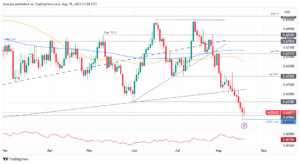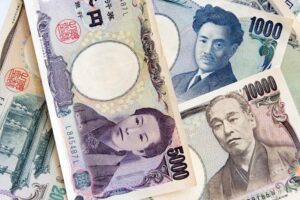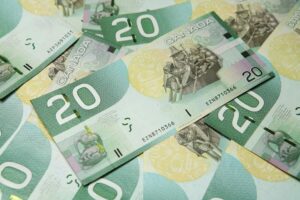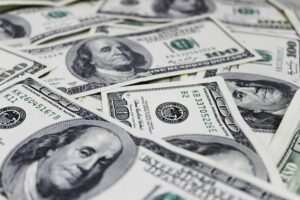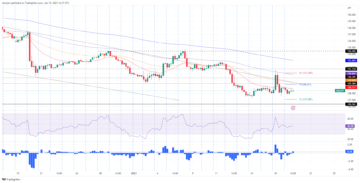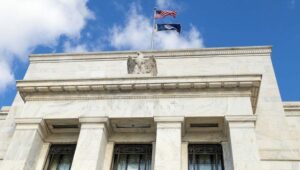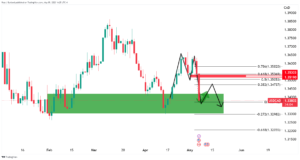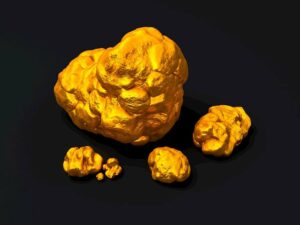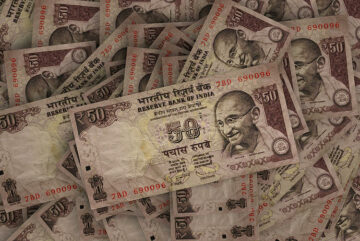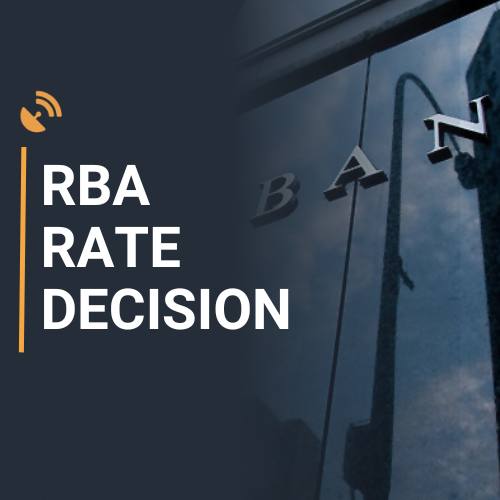
- Interest rate in Australia is seen on hold at 4.10% for the fourth straight meeting in October.
- Reserve Bank of Australia’s new Governor Michele Bullock could hint at more rate hikes.
- The Australian Dollar gears up for a big reaction to RBA policy announcement and guidance.
The Reserve Bank of Australia (RBA) is on track to keep its key interest rate unchanged for the fourth straight time on Tuesday, in a meeting that will be the first one for Michele Bullock as the new central bank Governor.
However, it remains to be seen if the newly appointed ninth Governor of RBA will leave the door open for more tightening by year-end.
Reserve Bank of Australia interest rate decision: All you need to know on Tuesday
- AUD/USD is sitting at three-day lows below 0.6300 as the US Dollar holds at 11-month highs.
- US S&P 500 futures trade modestly flat following a mixed close on Wall Street overniight. Meanwhile, the benchmark 10-year US Treasury bond yield consolidates gains above 4.60%.
- China’s business PMIs came in mixed over the weekend. The Caixin/S&P Global manufacturing purchasing managers’ index (PMI) fell to 50.6 in September from 51.0 in the previous month, missing forecasts of 51.2. The services index dropped to 50.2 in September from 51.8 in August, the lowest reading since December.
- The official data released by China’s National Bureau of Statistics (NBS) showed on Saturday that the Manufacturing PMI and the Non-Manufacturing PMI outpaced expectations at 50.2 and 51.7, respectively, in September.
- On Friday, the Fed’s most preferred inflation measure, the Core Personal Consumption Expenditures (PCE) Price Index arrived at 0.1% MoM and 3.9% YoY in August, softening from the previous month.
- The RBA interest-rate decision could provide a temporary breather to the AUD/USD downside amid a Golden Week holiday in China. The Australian central bank will also publish its bi-annual Financial Stability Review report on Friday.
RBA interest rate expectations: How will it impact AUD/USD?
Economists expect the Reserve Bank of Australia to hold the Official Cash Rate steady at 4.10% after the conclusion of the first monetary policy meeting presided over by Governor Michele Bullock on Tuesday. The decision will be announced at 03:30 GMT.
All major local banks, ANZ, CBA, Westpac and NAB also predict the RBA to stand pat at this week’s meeting. Markets are pricing one final 25 basis points rate hike by the RBA in November before standing pat at least until March next year.
In the September policy statement, the RBA maintained that “some further tightening of monetary policy may be required.” Bullock and her colleagues are likely to stick to the language from the previous policy statement, keeping more interest rate hikes in the offing.
Although Australian Consumer Price Index (CPI) inflation ticked higher to 5.2% in August as against a 4.9% increase in July, experts say that the central bank will wait for the full quarterly inflation and labor market report due later this month to decide on the policy action beyond the October meeting.
The RBA will assess the lagging effects of the monetary policy tightening and the impact of the recent surge in Oil prices. Mounting risks to the Australian economic outlook will remain a major factor dissuading the Bank to hike rates on Tuesday.
Previewing the RBA policy decision, analysts at BBH said, “Reserve Bank of Australia meets Tuesday and is expected to keep rates steady at 4.10%. This will be new Governor Bullock’s first meeting and WIRP suggests no odds of a hike. However, those odds rise to nearly 35% on November 7, 45% on December 5, and top out above 95% in March. At the last meeting on September 5, the bank kept rates steady at 4.10% but warned that further tightening may be required.“
Therefore, the Australian Dollar (AUD) is set to witness intense volatility on the RBA policy announcement, as traders will look for fresh cues on Bullock’s path forward on interest rates.
Meanwhile, Dhwani Mehta, Asian Session Lead Analyst at FXStreet, notes key technicals to trade AUD/USD on the policy verdict. “AUD/USD is back under the 21-day Simple Moving Average (SMA) at 0.6410 in the lead-up to the RBA showdown. The 14-day Relative Strength Index (RSI) is pointing south below the 50 level, keeping the downside risks intact for the Aussie pair.”
“The immediate support is seen at the September low of 0.6331. Further down, the 0.6300 round figure will be tested. On the flip side, acceptance above the 0.6450 level is needed to initiate a meaningful recovery toward the downward-sloping 50-day SMA at 0.6479. The next upside barrier is seen at the 0.6500 round level.”
Australian Dollar FAQs
One of the most significant factors for the Australian Dollar (AUD) is the level of interest rates set by the Reserve Bank of Australia (RBA). Because Australia is a resource-rich country another key driver is the price of its biggest export, Iron Ore. The health of the Chinese economy, its largest trading partner, is a factor, as well as inflation in Australia, its growth rate and Trade Balance. Market sentiment – whether investors are taking on more risky assets (risk-on) or seeking safe-havens (risk-off) – is also a factor, with risk-on positive for AUD.
The Reserve Bank of Australia (RBA) influences the Australian Dollar (AUD) by setting the level of interest rates that Australian banks can lend to each other. This influences the level of interest rates in the economy as a whole. The main goal of the RBA is to maintain a stable inflation rate of 2-3% by adjusting interest rates up or down. Relatively high interest rates compared to other major central banks support the AUD, and the opposite for relatively low. The RBA can also use quantitative easing and tightening to influence credit conditions, with the former AUD-negative and the latter AUD-positive.
China is Australia’s largest trading partner so the health of the Chinese economy is a major influence on the value of the Australian Dollar (AUD). When the Chinese economy is doing well it purchases more raw materials, goods and services from Australia, lifting demand for the AUD, and pushing up its value. The opposite is the case when the Chinese economy is not growing as fast as expected. Positive or negative surprises in Chinese growth data, therefore, often have a direct impact on the Australian Dollar and its pairs.
Iron Ore is Australia’s largest export, accounting for $118 billion a year according to data from 2021, with China as its primary destination. The price of Iron Ore, therefore, can be a driver of the Australian Dollar. Generally, if the price of Iron Ore rises, AUD also goes up, as aggregate demand for the currency increases. The opposite is the case if the price of Iron Ore falls. Higher Iron Ore prices also tend to result in a greater likelihood of a positive Trade Balance for Australia, which is also positive of the AUD.
The Trade Balance, which is the difference between what a country earns from its exports versus what it pays for its imports, is another factor that can influence the value of the Australian Dollar. If Australia produces highly sought after exports, then its currency will gain in value purely from the surplus demand created from foreign buyers seeking to purchase its exports versus what it spends to purchase imports. Therefore, a positive net Trade Balance strengthens the AUD, with the opposite effect if the Trade Balance is negative.
- SEO Powered Content & PR Distribution. Get Amplified Today.
- PlatoData.Network Vertical Generative Ai. Empower Yourself. Access Here.
- PlatoAiStream. Web3 Intelligence. Knowledge Amplified. Access Here.
- PlatoESG. Carbon, CleanTech, Energy, Environment, Solar, Waste Management. Access Here.
- PlatoHealth. Biotech and Clinical Trials Intelligence. Access Here.
- Source: https://www.fxstreet.com/news/rba-decision-preview-australian-central-bank-expected-to-hold-interest-rate-steady-for-fourth-straight-time-202310030043
- :is
- :not
- ][p
- $UP
- 2%
- 2021
- 25
- 30
- 32
- 35%
- 36
- 50
- 500
- 51
- 7
- 8
- 95%
- a
- above
- acceptance
- According
- Accounting
- Action
- adjusting
- After
- again
- against
- aggregate
- ahead
- All
- also
- Amid
- analyst
- Analysts
- and
- Animate
- announced
- Announcement
- Another
- appointed
- ARE
- arrived
- AS
- asian
- assess
- Assets
- At
- AUD
- AUD/USD
- AUGUST
- Australia
- Australian
- Australian dollar
- average
- back
- Balance
- Bank
- Banks
- barrier
- basis
- BE
- because
- before
- below
- Benchmark
- between
- Beyond
- Big
- Biggest
- Billion
- bond
- Bureau
- business
- but
- buyers
- by
- came
- CAN
- case
- Cash
- central
- Central Bank
- Central Banks
- China
- Chinas
- chinese
- Close
- colleagues
- COM
- compared
- conclusion
- conditions
- Consolidates
- consumer
- consumer price index
- consumption
- content
- Core
- could
- country
- CPI
- created
- credit
- Currency
- data
- December
- decide
- decision
- Demand
- destination
- difference
- direct
- doing
- Dollar
- Door
- down
- downside
- driver
- dropped
- due
- each
- easing
- economy
- effect
- effects
- ends
- expanded
- expect
- expectations
- expected
- experts
- export
- exports
- factor
- factors
- Falls
- FAQ
- FAST
- Figure
- final
- financial
- financial stability
- First
- flat
- Flip
- following
- For
- forecasts
- foreign
- Former
- Forward
- Fourth
- fresh
- Friday
- from
- from 2021
- full
- further
- Futures
- Gain
- Gains
- gears
- gears up
- generally
- Global
- GMT
- goal
- Goes
- Golden
- goods
- Governor
- greater
- Growing
- Growth
- guidance
- Have
- Health
- her
- High
- higher
- highly
- Highs
- Hike
- Hikes
- hold
- holds
- Holiday
- How
- However
- HTTPS
- if
- immediate
- Impact
- imports
- in
- Increase
- Increases
- index
- inflation
- inflation rate
- influence
- initiate
- interest
- INTEREST RATE
- INTEREST RATE HIKES
- Interest Rates
- Investors
- IT
- ITS
- July
- Keep
- keeping
- kept
- Key
- Know
- labor
- labor market
- lagging
- language
- largest
- Last
- later
- lead
- least
- Leave
- LEND
- Level
- lifting
- likelihood
- likely
- local
- LOCAL BANKS
- Look
- Low
- lowest
- Lows
- Main
- maintain
- major
- manufacturing
- March
- Market
- Market Report
- market sentiment
- Markets
- materials
- May..
- meaningful
- Meanwhile
- measure
- meeting
- Meets
- missing
- mixed
- module
- mom
- Monetary
- Monetary Policy
- Month
- more
- most
- moving
- moving average
- NAB
- National
- nearly
- Need
- needed
- negative
- net
- New
- newly
- next
- no
- Notes
- November
- october
- Odds
- of
- official
- Offing
- often
- on
- ONE
- open
- opposite
- or
- Other
- out
- over
- pair
- pairs
- partner
- path
- pause
- pays
- pce
- personal
- plato
- Plato Data Intelligence
- PlatoData
- pmi
- points
- policy
- positive
- predict
- preferred
- previous
- price
- Prices
- pricing
- primary
- produces
- provide
- publish
- purchase
- purchases
- purchasing
- purely
- Pushing
- quantitative
- Quantitative Easing
- Rate
- Rate Hike
- rate hikes
- Rates
- Raw
- RBA
- reaction
- Reading
- recent
- recovery
- related
- relative
- relative strength index
- Relative Strength Index (RSI)
- relatively
- released
- remain
- remains
- report
- required
- Reserve
- reserve bank
- reserve bank of australia
- Reserve Bank of Australia (RBA)
- respectively
- result
- review
- Rise
- Rises
- risks
- Risky
- round
- rsi
- S&P
- S&P 500
- Said
- saturday
- say
- seeking
- seen
- sentiment
- September
- Services
- session
- set
- setting
- Showdown
- showed
- side
- Signal
- significant
- Simple
- since
- Sitting
- SMA
- So
- sought
- South
- Stability
- stable
- stand
- starts
- Statement
- statistics
- steady
- Stick
- straight
- street
- strength
- Strengthens
- Suggests
- support
- surge
- surplus
- surprises
- taking
- temporary
- tested
- that
- The
- then
- therefore
- this
- those
- three-day
- tightening
- time
- to
- top
- toward
- track
- trade
- Traders
- Trading
- treasury
- Tuesday
- under
- until
- Upside
- us
- US Dollar
- US Treasury
- use
- value
- Verdict
- Versus
- wait
- Wall
- Wall Street
- week
- weekend
- WELL
- Westpac
- What
- when
- whether
- which
- whole
- will
- with
- witness
- year
- Yield
- you
- zephyrnet

